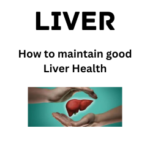Half of India’s children, women are anaemic: Basics Explained

Indian women and children are overwhelmingly anaemic, according to the National Family Health Survey 2019-20 released in November month, and the condition is the most prevalent in the Himalayan cold desert.
In Phase I of the National Family Health Survey (NHFS), result factsheets have been released for 22 states and UTs. Anaemia testing during the survey was done among children aged 6 to 59 months and among women and men aged 15 to 49 years of age. In a majority of these states and UTs, more than half the children and women were found to be anaemic.
In 15 of these 22 states and UTs, more than half the children are anaemic. Similarly, more than 50 per cent women are anaemic in 14 of these states and UTs.
The proportion of anaemic children and women is comparatively lower in Lakshadweep, Kerala, Meghalaya, Manipur, Mizoram and Nagaland, and higher in Ladakh, Gujarat, J&K, and West Bengal, among others. Anaemia among men was less than 30 per cent in a majority of these states and UTs.
LEARNING FROM HOME/ WITHOUT CLASSES/ BASICS
Anemia is defined as a low number of red blood cells ; haemoglobin concentration within them . Hemoglobin is the main protein in your red blood cells. It carries oxygen, and delivers it throughout your body.
If you have anemia, your hemoglobin level will be low too. If it is low enough, your tissues or organs may not get enough oxygen. Symptoms of anemia — like fatigue or shortness of breath — happen because your organs aren’t getting what they need to work the way they should. The most common causes of anaemia include nutritional deficiencies, particularly iron deficiency, though deficiencies in folate, vitamins B12 and A are also important causes.
Men with haemoglobin levels of less than 13.0 grams (g) per decilitre (dL) are considered anaemic, as per World Health Organization norms. Women with levels lower than 12.0 g/dL are considered anaemic if they are not pregnant. Among pregnant women, levels lower than 11.0 g/dL signal anaemia .
Nutritional deficiency is by far the most common cause of anaemia worldwide. Nearly half the cases of nutritional deficiency-related anaemia in India are caused by consuming too little iron. Inadequate intake of the vitamins B9 (folate) and B12 is also a frequent cause.
The flagship initiative to combat anaemia that started in 1970, the National Anaemia Prophylaxis Programme, concentrated on distributing iron and folic acid tablets among two vulnerable population segments–pregnant women, and children aged 1 to 5 years. Anemia Mukt Bharat was launched in April 2018 for combating anemia.







0 Comments